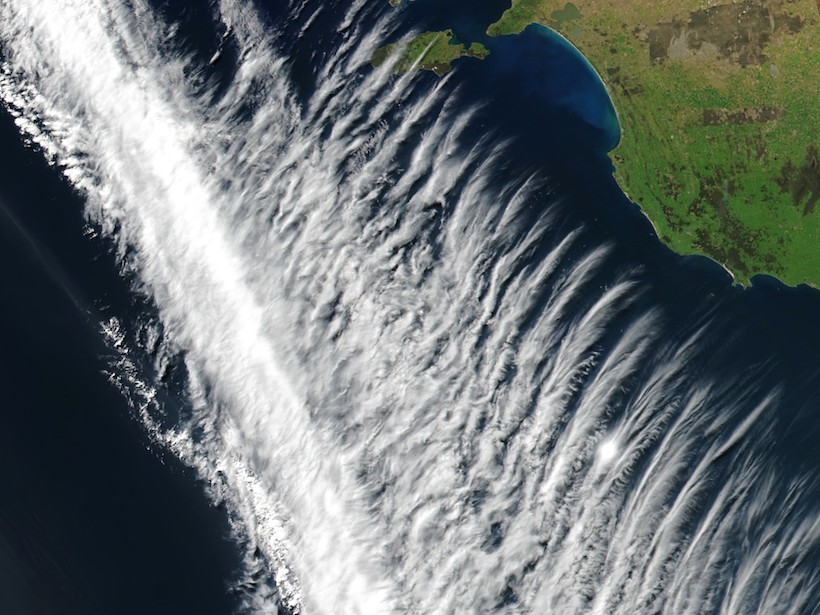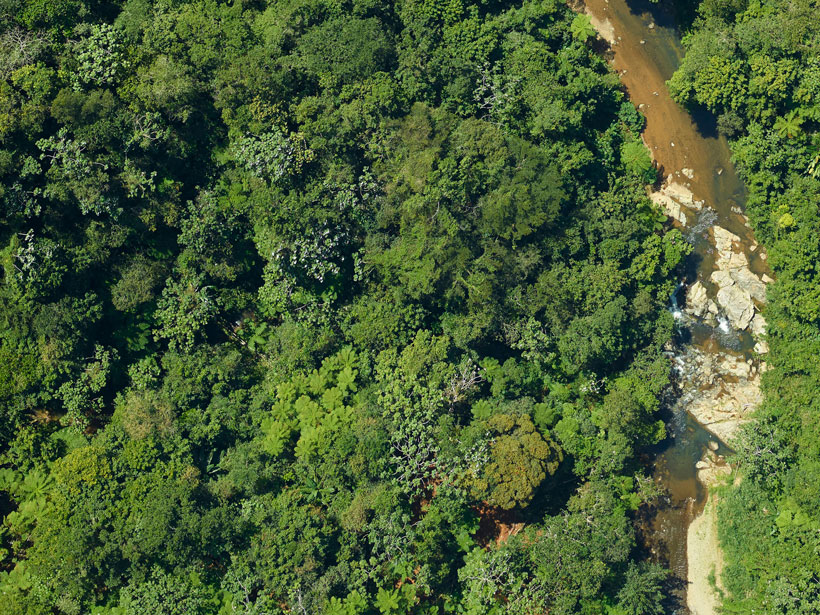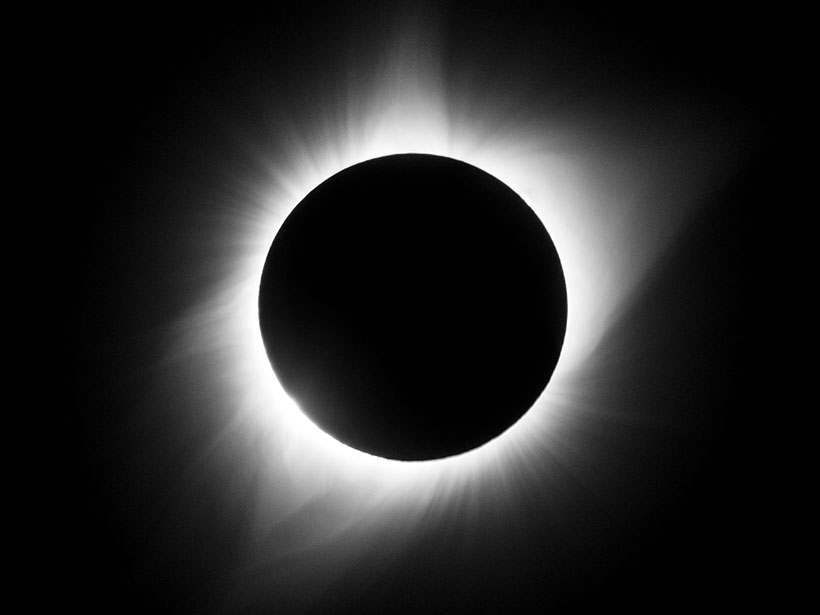Naval radio signals may cause the formation of a barrier observed during geomagnetic storms that is seemingly impenetrable by relativistic electrons.
Morgan Rehnberg
Successfully Simulating Atmospheric Gravity Waves
These waves are key to moving energy from the troposphere to the thermosphere, but until now they haven’t been well described at high altitudes in computer models.
A Clearer Look at Lunar Surface Hydration
Independent ground-based observations of the Moon confirm prior spacecraft observations that hydration at the lunar surface varies with temperature.
“Mushballs” May Drive Ammonia Transport on Jupiter
Hail might account for observed depletions of ammonia in the planet’s atmosphere.
In Vegetation Growth Studies, What You Measure Matters
Different satellite-based metrics for global vegetation coverage tell complementary, but not identical, stories.
Altitude Matters for Solar Eclipse Observations
The path of a solar eclipse through Earth’s ionosphere, which can be quite different than it is at ground level, appears to explain patterns of ionized particle depletions.
Electron Density near Enceladus Shows Orbital Variation
The electron density peaks well after the activity of the moon’s distinctive south polar ice plume reaches its maximum, but the cause of the lag remains puzzling.







